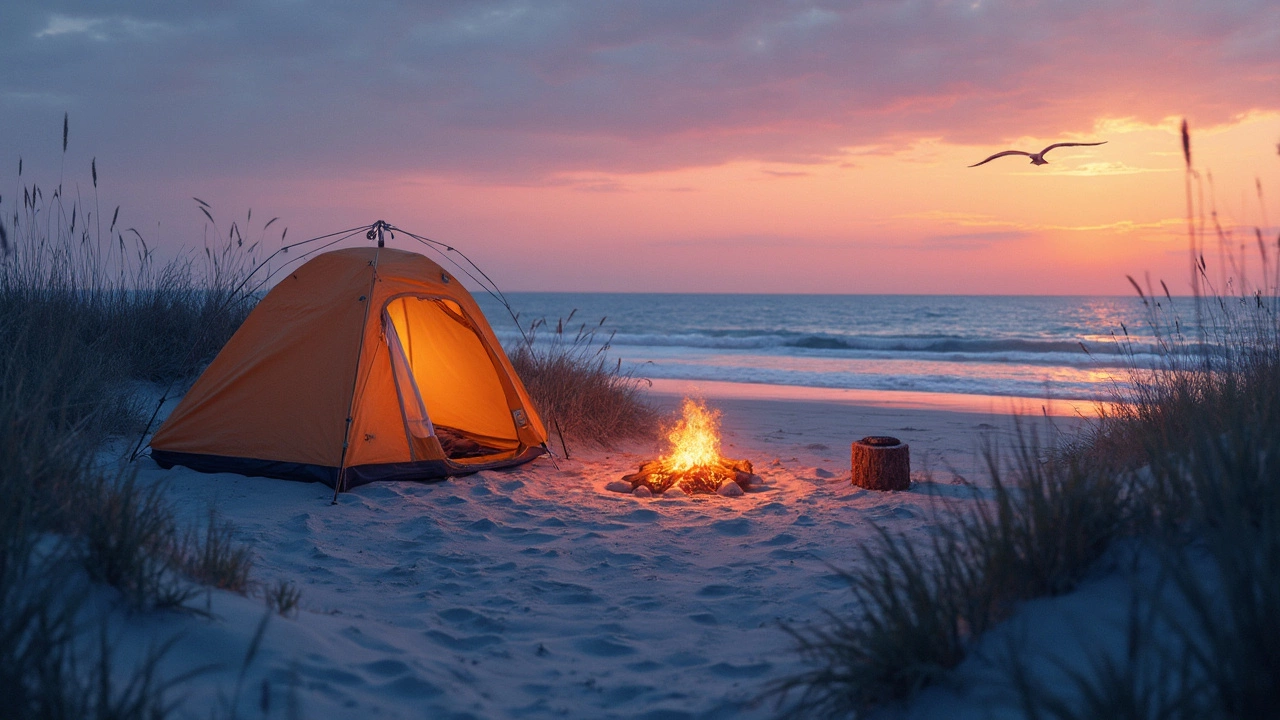Beach Camping in South Carolina: Where to Pitch, What to Know
Thinking about sleeping under the stars with the ocean right at your feet? South Carolina’s shoreline offers a mix of quiet dunes and lively boardwalks perfect for a weekend of beach camping. Below you’ll find the most popular spots, the rules you need to follow, and practical tips to keep your trip smooth.
Where to Camp on South Carolina’s Coast
Hunting Island State Park is a favorite for its wide sandy beaches and easy‑access RV sites. The park lets you set up a tent at the designated campground, which includes dump stations and fire rings. Arrive early in summer – the spots fill up fast.
Edisto Beach State Park offers a more low‑key vibe. There are a handful of primitive sites right on the sand where you can hear the waves all night. Just remember that you’ll need to bring your own water and toilet supplies; there are no hookups.
James Island County Park near Charleston is great for families. The park has a beachside campground with full hookups, playgrounds, and a short bike trail that runs along the shoreline. It’s a good choice if you want a mix of beach time and other activities.
If you prefer a secluded feel, try Little River Wildlife Management Area. It’s less crowded, and you can camp on the sandy stretch near the marsh. You’ll need a North Carolina‑style permit (available online) to stay overnight.
All these spots charge a daily fee that ranges from $20 to $45, and most accept credit cards at the entrance kiosk. Check the park’s website for the latest rates and reservation options.
Staying Safe and Legal
South Carolina lets you camp on public beach campsites, but you can’t just pitch a tent anywhere. Look for “designated camping areas” marked with signs. Parking outside these zones can result in a fine, and the landowner might ask you to leave.
Fire rules are strict during the hotter months. Only use the provided fire rings, and never leave a flame unattended. If you’re camping in a dry season, many parks will ban open fires altogether – a portable gas stove is your safest bet for cooking.
Leave No Trace is more than a slogan here. Pack out all trash, bury cat litter, and rinse off sand before you hit the road. The ocean’s ecosystem is fragile, and keeping the beach clean helps preserve it for everyone.
Safety-wise, watch the tide schedule. High tide can wash away your gear if you’re too close to the waterline. Download a tide‑chart app and set a reminder to move your tent inland an hour before the water peaks.
Finally, bring a basic first‑aid kit, a headlamp, and a portable charger. Cell service can be spotty on remote stretches, so it’s smart to have backup lighting and power.
With the right spot, a bit of planning, and respect for local rules, beach camping in South Carolina becomes a simple, unforgettable experience. Pack your bag, hit the coast, and enjoy the sound of waves as your lullaby.
Best Spots to Sleep on the Beach in South Carolina
Exploring South Carolina's beautiful coastlines is more than just a day trip. Discover where you can legally and comfortably sleep on the beach, ranging from managed campgrounds to backcountry sites. This guide will help you navigate the best spots, with essential tips to ensure a safe and enjoyable beach camping experience.
